
Browse an alphabetical list of photographs. These historical images portray people, places, and events before, during, and after World War II and the Holocaust.
<< Previous | Displaying results 26-50 of 79 for "Photo" | Next >>
Elsa Eisner, marked with a Jewish badge, walks down a street in Prague. She, her mother, twin sister and other members of the family were deported to Auschwitz in July 1942. Prague, Czechoslovakia, ca. 1941.
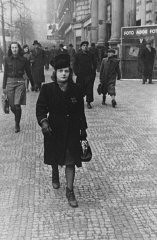
Four emaciated survivors sit outside in the newly liberated Ebensee concentration camp. Photograph taken by Signal Corps photographer J Malan Heslop. Ebensee, Austria, May 8, 1945.
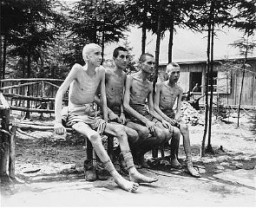
The American Jewish Congress holds an emergency session following the Nazi rise to power and subsequent anti-Jewish measures. United States, May 1933.
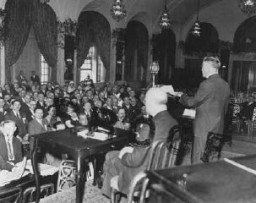
Emmi G., a 16-year-old housemaid diagnosed as schizophrenic. She was sterilized and sent to the Meseritz-Obrawalde euthanasia center where she was killed with an overdose of tranquilizers on December 7, 1942. Place and date uncertain.
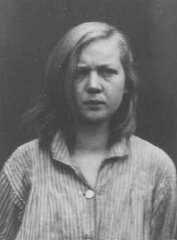
Entrance to the public baths in Wannsee with a sign stating, "Entrance to Jews is forbidden." Berlin, Germany, 1935.
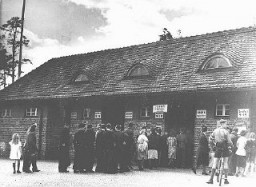
View of the entrance to Oskar Schindler's enamel works in Zablocie, a suburb of Krakow. Poland, 1939-1944.
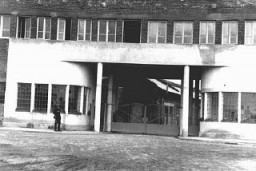
Entrance to the Breendonk internment camp. Breendonk, Belgium, 1940-1944.
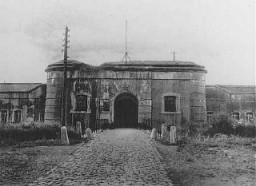
The entrance to the gas chamber in Auschwitz I, where Zyklon B was tested on Soviet prisoners of war. The building in the background is a hospital for SS members. Auschwitz, Poland, date uncertain.
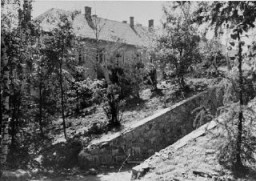
View of the entrance to the Plaszow camp. Plaszow, Poland, 1943-1944.
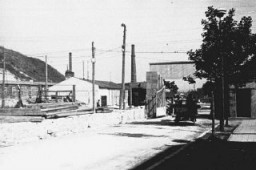
Entrance to the Ploetzensee prison. At Ploetzensee, the Nazis executed hundreds of Germans for opposition to Hitler, including many of the participants in the July 20, 1944, plot to kill Hitler. Berlin, Germany, postwar.
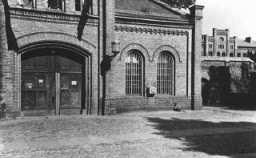
Entrance gate to the Riga ghetto. This photograph was taken from outside the ghetto fence. Riga, Latvia, 1941-1943.
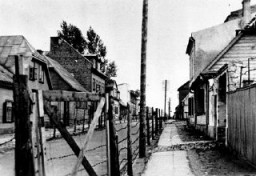
Entrance to the Riga ghetto. Riga, Latvia, 1941–43. During the Holocaust, the creation of ghettos was a key step in the Nazi process of separating, persecuting, and ultimately destroying Europe's Jews.
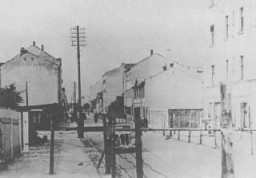
View of a tunnel entrance to the rocket factory at the Dora-Mittelbau concentration camp, near Nordhausen. Germany, April-May 1945.

Entrance to the Warsaw ghetto. The sign states: "Epidemic Quarantine Area: Only Through Traffic is Permitted." Warsaw, Poland, February 1941.

Jewish displaced persons (DPs) enter the main gate of the Ziegenhain DP camp, September 1946.
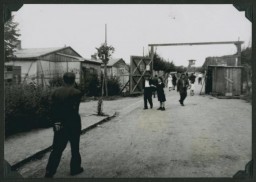
Identification picture of Erich Mühsam taken in the Oranienburg concentration camp. Mühsam, an anarchist and a pacifist, worked as an editor and writer; he was imprisoned during World War I for opposing the war. Arrested during the massive roundup of Nazi political opponents following the Reichstag fire (February 27, 1933), Mühsam was tortured to death in Oranienburg on July 11, 1934. Oranienburg, Germany, February 3, 1934.
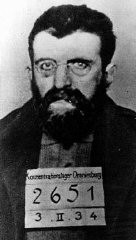
Portrait of Ernest Hemingway by Helen Pierce Breaker. Paris, France, ca. 1928. In 1933, Nazi students at more than 30 German universities pillaged libraries in search of books they considered to be "un-German." Among the literary and political writings they threw into the flames were the works of Ernest Hemingway.
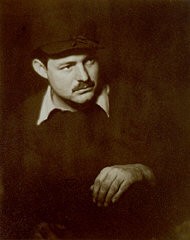
Author Ernest Hemingway aboard the boat Pilar, ca. 1950. In 1933, Nazi students at more than 30 German universities pillaged libraries in search of books they considered to be "un-German." Among the literary and political writings they threw into the flames were the works of Ernest Hemingway.
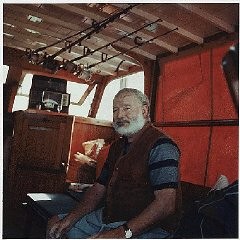
Defendant Ernst Kaltenbrunner during the International Military Tribunal at Nuremberg. He was Chief of the Reich Security Main Office (RSHA) and later Chief of the Security Police.
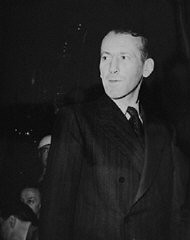
1943 photograph of SS General Ernst Kaltenbrunner, who served as head of the Reich Security Main Office (RSHA) and as chief of Nazi Security Police (Sipo) and the Security Service (SD).
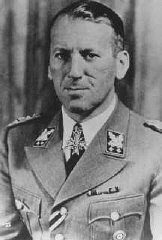
Ernst Toller, German dramatist and revolutionary, emigrated from Germany to other European nations and then to the United States. New York, United States, May 1939.
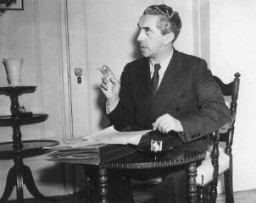
Lieutenant General (later Field Marshal) Erwin Rommel commanded German forces during the campaign in North Africa. Libya, 1941.
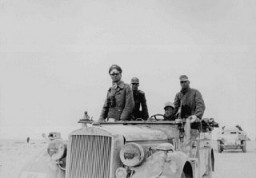
Jewish refugees from France and the Netherlands make their way from France into Spain through a pass in the Pyrenees mountain range. They are being rescued by "Dutch-Paris," an organization created by Seventh-day Adventist Johan Weidner. Ca. 1940.

Establishing racial descent by measuring an ear at the Kaiser Wilhelm Institute for Anthropology. Germany, date uncertain.
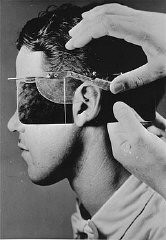
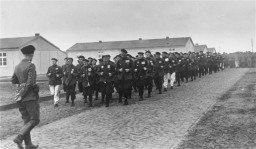
We would like to thank Crown Family Philanthropies, Abe and Ida Cooper Foundation, the Claims Conference, EVZ, and BMF for supporting the ongoing work to create content and resources for the Holocaust Encyclopedia. View the list of donor acknowledgement.